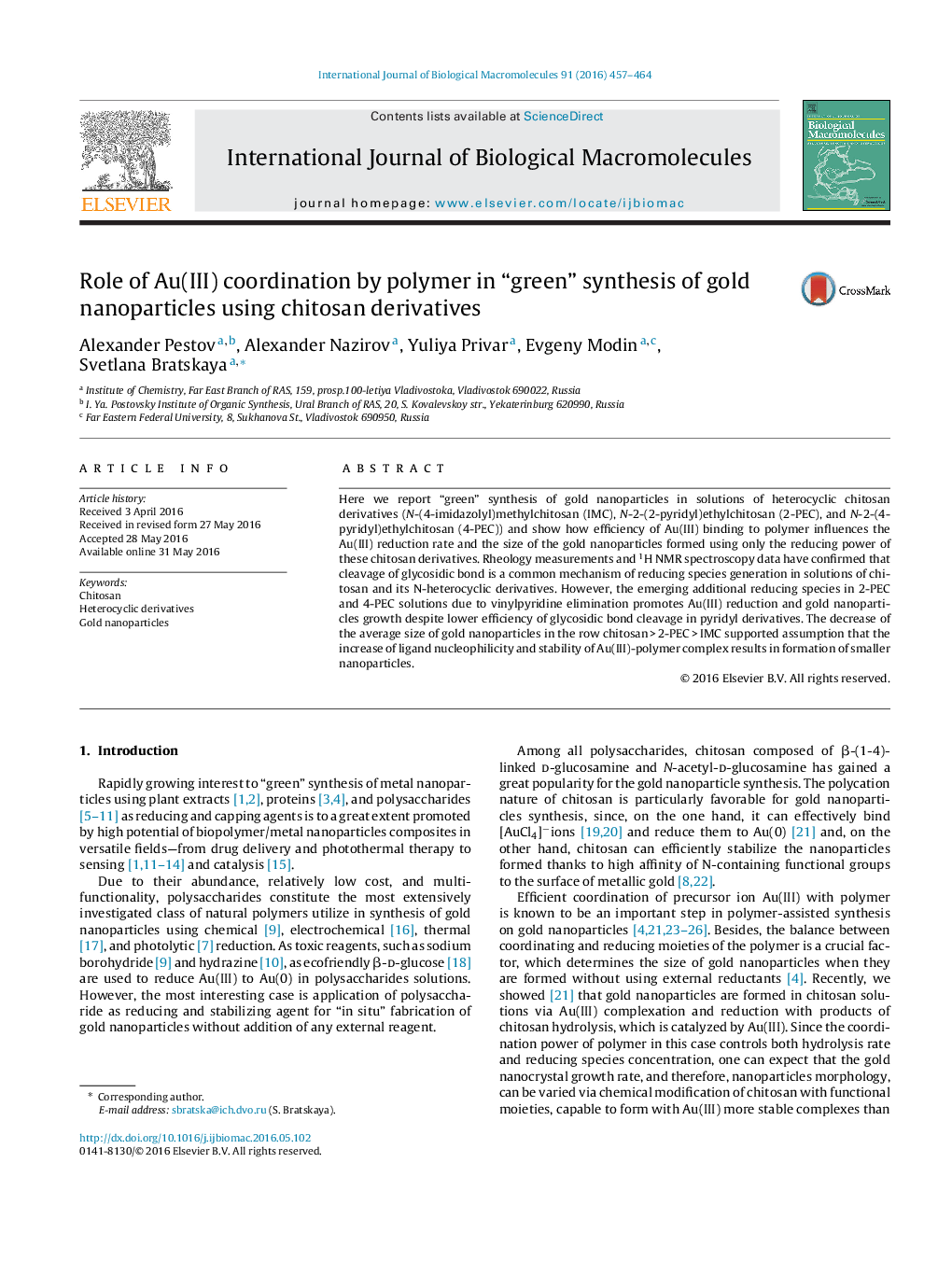| Article ID | Journal | Published Year | Pages | File Type |
|---|---|---|---|---|
| 1985648 | International Journal of Biological Macromolecules | 2016 | 8 Pages |
Here we report “green” synthesis of gold nanoparticles in solutions of heterocyclic chitosan derivatives (N-(4-imidazolyl)methylchitosan (IMC), N-2-(2-pyridyl)ethylchitosan (2-PEC), and N-2-(4-pyridyl)ethylchitosan (4-PEC)) and show how efficiency of Au(III) binding to polymer influences the Au(III) reduction rate and the size of the gold nanoparticles formed using only the reducing power of these chitosan derivatives. Rheology measurements and 1H NMR spectroscopy data have confirmed that cleavage of glycosidic bond is a common mechanism of reducing species generation in solutions of chitosan and its N-heterocyclic derivatives. However, the emerging additional reducing species in 2-PEC and 4-PEC solutions due to vinylpyridine elimination promotes Au(III) reduction and gold nanoparticles growth despite lower efficiency of glycosidic bond cleavage in pyridyl derivatives. The decrease of the average size of gold nanoparticles in the row chitosan > 2-PEC > IMC supported assumption that the increase of ligand nucleophilicity and stability of Au(III)-polymer complex results in formation of smaller nanoparticles.
